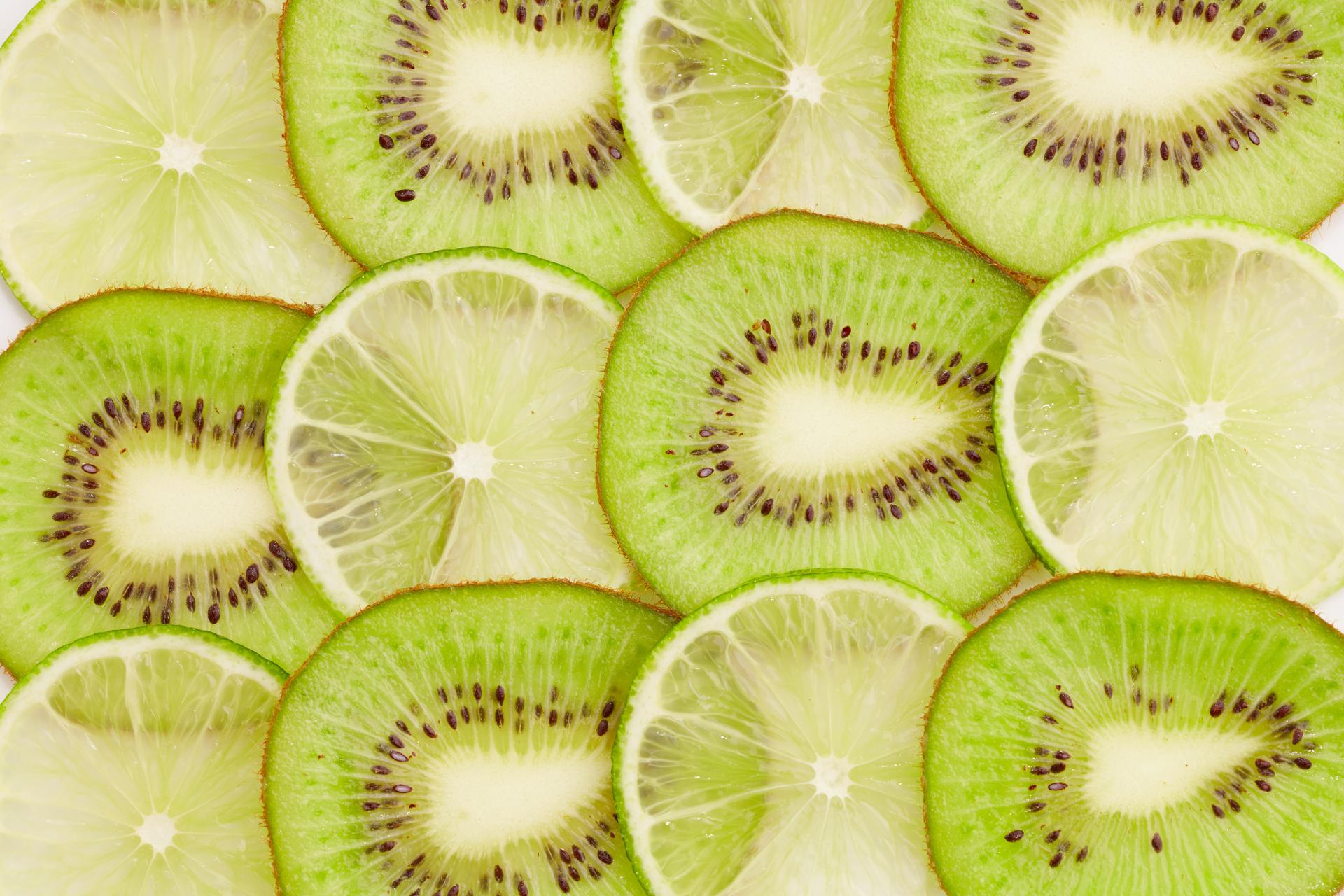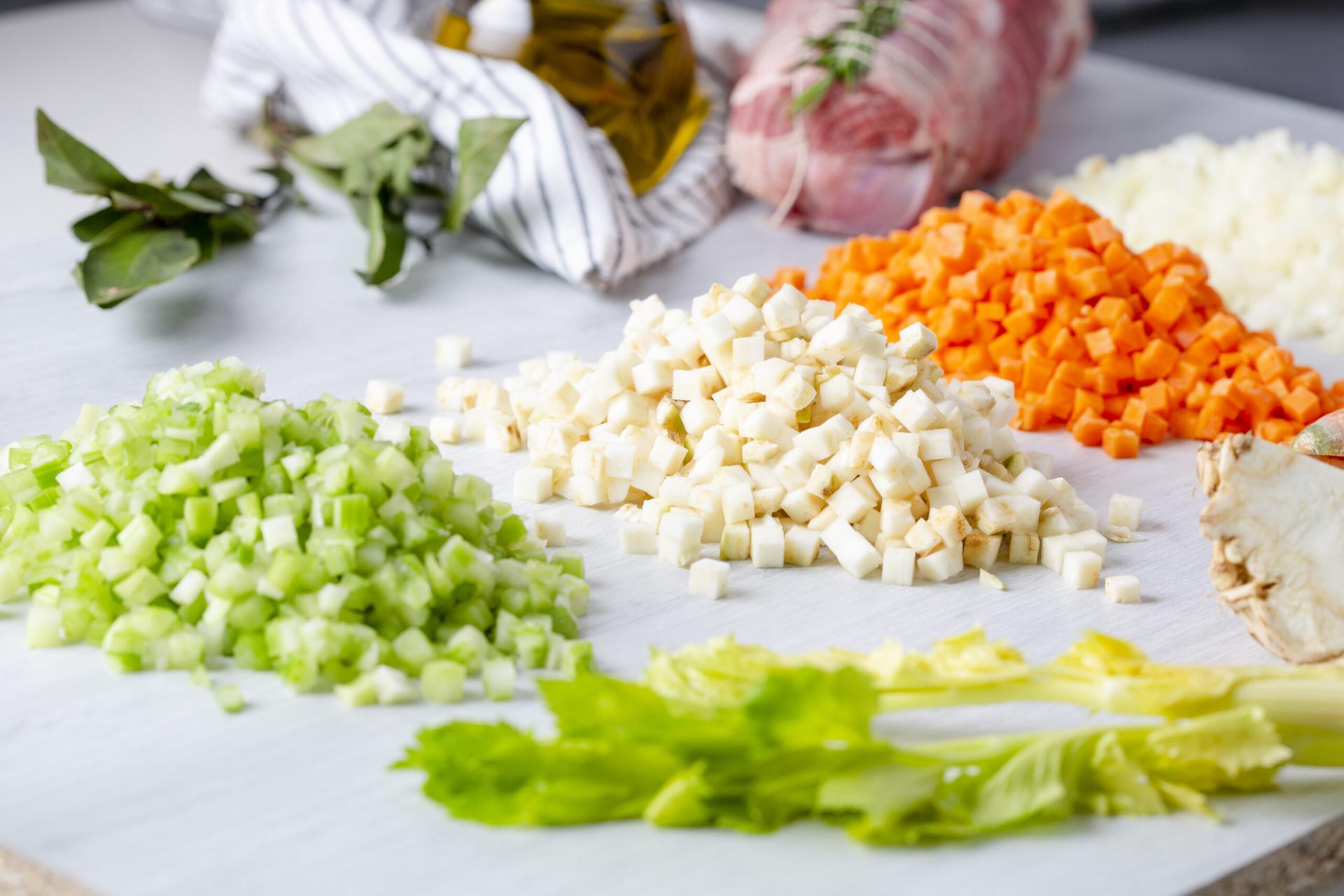

Enhancing food quality and balanced meals in school canteens:
A guide for chefs
In school canteens, the quality of food and the balance of meals are essential to supporting the health and well-being of students.
As a chef, your role extends beyond just preparing meals; it’s about ensuring that every meal served meets high standards of nutrition and taste. This article focuses on the importance of combining well-balanced meals with high-quality appliances.
Food quality in school meals is important for several reasons:
- Nutritional value: high-quality food ensures that students receive the necessary nutrients for growth, cognitive function, and overall health. Fresh, minimally processed ingredients are key to maintaining the nutritional integrity of meals.
- Taste and appeal: good quality food is more likely to be enjoyed by students, encouraging them to eat a balanced meal. Fresh, seasonal ingredients tend to have better flavor and texture, making meals more appealing.
- Food safety: high food quality also means adhering to strict food safety standards. This includes proper storage, handling, and preparation of food to prevent foodborne illnesses, which is particularly important in a school setting.
Designing balanced meals for every meal of the day
Creating a well-balanced menu ensures that students receive consistent nutrition to fuel their activities and studies. Here’s how to balance school meals:
- Lunch: sustaining energy and focus
Lunch should be a hearty meal that sustains students through the rest of the school day. A balanced lunch should include: lean proteins (chicken, turkey, beans), vegetables, whole grains (whole-grain bread, brown rice), fruits and healthy fats.
- Snacks: healthy midday boosters
Snacks should provide a quick energy boost without being overly processed or high in sugar. Balanced snacks include: fruits and vegetables and proteins (nuts, cheese, or yogurt).
School canteens typically rely on a variety of kitchen appliances to prepare large quantities of food efficiently and safely. Dito Sama offers a wide range of essential appliances for school canteens, such as:
- Vegetable slicers, which slice vegetables uniformly for sandwiches, salads, and other dishes, ensuring consistency and speeding up food preparation.
- Food processors, designed to chop, blend, and emulsify ingredients quickly and for creating smooth textures in dishes like purees, sauces, and spreads.
- Vegetable peelers to efficiently peel large quantities of potatoes, carrots, and onions, saving time and labor.
- Hand mixers and turbo liquidizers for preparing large batches of soups, sauces, or purees.
- Planetary mixers for preparing a variety of savory and sweet recipes, such as bread, pizza dough, and cakes, catering to the diverse tastes of children and students.
- Vacuum packers to preserve food for longer periods, allowing for the preparation of large portions in advance.
These appliances are must-haves for any well-functioning school canteen, allowing chefs to efficiently prepare high-quality, balanced meals for students throughout the day.
By focusing on high food quality and well-balanced meals throughout the day, chefs in school canteens can significantly contribute to the health and well-being of students.
LAST NEWS

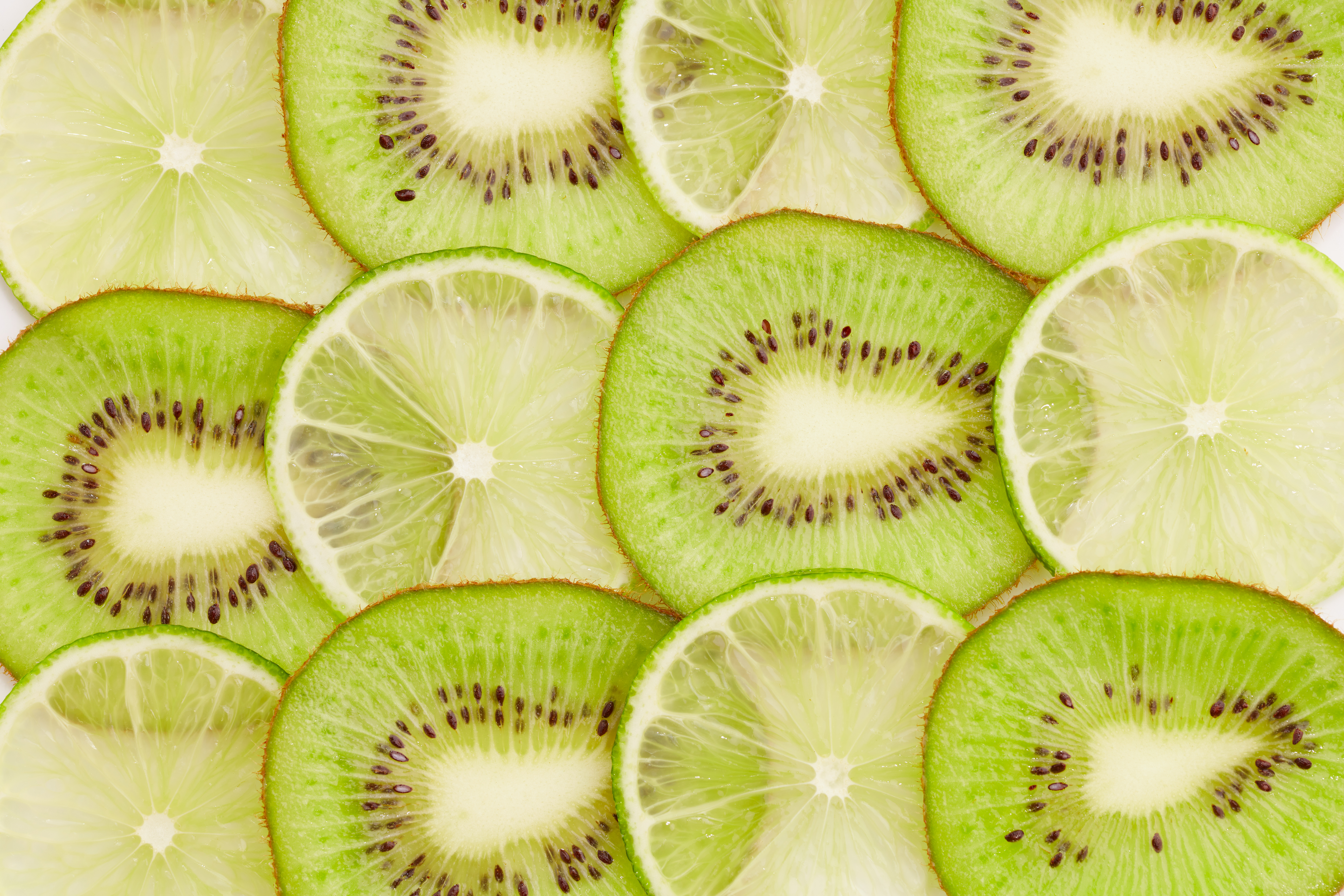
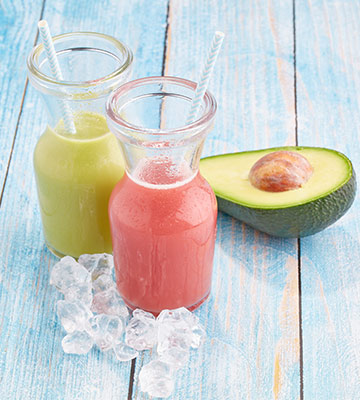
Beat the heat with a refreshing summer menu: tips for chefs
Summer heat waves can pose unique challenges in the kitchen, but with the right cautions, chefs can craft menus that keep guests cool, healthy, and refreshed.
Here are essential tips tailored specifically for professional kitchens to help you navigate the summer season effectively.
- Create light and nourishing dishes
- Hydrating ingredients: Incorporate water-rich fruits and vegetables such as cucumbers, melons, and berries. Use our vegetable slicers to speed up prep work and maintain the texture and freshness of your dishes. Our specialized washers and dryers can ensure leafy greens are thoroughly cleaned and crisp.
- Balanced menus: focus on high-fiber, lean proteins, and low-saturated fats. A visually appealing, colorful plate not only enhances presentation but also supports nutritional balance. Our wide range of cutting disks can help achieve tasty and attractive presentations.
- Ensure optimal hydration
- Creative Hydration Options: Use commercial hand mixers to prepare infused water with fruits, herbs, or cucumber. Fresh smoothies, made with high-powered food processors can provide a hydrating and nutritious alternative for the clients.
- Mindful Grilling Techniques
- Lean protein selection: opt for lean proteins like chicken, turkey, or fish, which cook faster and are gentler on the digestive system in the heat.
- Grill diverse vegetables: include a variety of grilled vegetables such as bell peppers, zucchini, and tomatoes into your menu. To cut, dice, slice don’t forget to use our vegetable slicer.
4. Prioritize food safety
- Prevent foodborne illness: preserve food quality and safety by using our vacuum packers. This ensures that perishable items remain fresh and protected from harmful bacteria.
By putting these tips into practice, chefs can prepare quick, healthy, and fresh dishes while preserving quality and flavor for their customers, even during summer heat waves.
LAST NEWS



World Environment Day: A Call to Action for a Sustainable Future
Today, on the 5th of June, we celebrate World Environment Day. This day was established by the United Nations in 1974.
It is a day dedicated to encouraging worldwide consciousness and action towards conscious consumption and taking care of our planet.
World Environment Day is more than just an annual event; it is a global movement that fosters the commitment of individuals, communities, and organizations to environmental protection. Each year, the event focuses on a different theme, highlighting urgent environmental challenges. From combating plastic pollution to protecting wildlife and promoting sustainable living, these themes drive impactful campaigns and initiatives. This year’s World Environment Day campaign focuses on land restoration, desertification and drought resilience.
At Dito Sama, we are deeply committed to the principles of sustainability and environmental responsibility. Our mission is to provide a fresh and sustainable experience through our products. We believe that every step, from design to production, lifecycle management, packaging, and transportation, should reflect our dedication to the environment.
Our commitment to the environment is immense. We integrate sustainable solutions across all stages of our production process. Here’s how we do it:
- No heavy metals in our products (REACH & ROHS compliant) and absence of BPA: Ensuring our products are free from harmful substances protects both the environment and consumer health.
- An environmental management system implemented throughout our production chains: This allows us to continuously monitor and reduce our environmental impact at every stage.
- Minimizing the environmental footprint at every stage: From raw material sourcing to final product delivery, we meticulously strive to reduce waste and emissions.
- Adherence to rigorous sustainability standards in our manufacturing processes: Our processes are designed to meet and exceed the highest sustainability standards.
- ISO 9001 (Quality) and ISO 14001 (Environment) certifications: These certifications validate our commitment to quality and environmental management.
- Selecting transporters based on stringent criteria, including compliance with the EURO 6 standard: We choose transport partners who share our commitment to reducing emissions.
- Striving to minimize our carbon footprint: Our logistics chain is optimized to minimize carbon emissions from the manufacturing site to your doorstep.
- Ensuring responsible treatment and disposal of electronic waste: partnering with Ecologic to ensure responsible electronic waste disposal.
- Adhering to current standards and regulations for proper waste management: Compliance with waste management regulations is integral to our environmental strategy. To know more about it have a look on our dedicated video:
By choosing Dito Sama, you not only enjoy superior products and services but also contribute to reducing environmental and social impacts. Our approach is a testament to the fact that businesses can thrive while being eco-friendly and socially responsible.
On this World Environment Day, let’s reflect on how our actions affect the planet. Every small change counts. Whether it’s reducing plastic use, conserving water, or supporting sustainable brands, each effort helps build a more sustainable future.
Join us in making every day a step towards a greener, more sustainable world. Together, we can protect and preserve our planet for future generations.
LAST NEWS



A Complete Guide to Embracing Transformative Healthy Habits
Healthy habits refer to consistent behaviors and practices that contribute positively to overall well-being.
Here are several examples of healthy habits across various aspects of life:
- Nutrition: Maintaining a well-balanced diet by including a variety of fruits, vegetables, whole grains, lean proteins, and healthy fats in daily meals. Avoiding excessive consumption of processed foods, sugars, and saturated fats promotes better health.
- Regular Exercise: Engaging in physical activity regularly, such as brisk walking, jogging, cycling, or participating in sports, to improve cardiovascular health, muscle strength, flexibility, and overall fitness. Aim for at least 150 minutes of moderate-intensity exercise per week.
- Adequate Hydration: Consuming an adequate amount of water throughout the day (approximately 8-10 glasses) to support bodily functions, maintain hydration, and flush out toxins.
- Sufficient Sleep: Prioritizing sleep by aiming for 7-9 hours of quality sleep each night. Good sleep supports overall health, cognitive function, and emotional well-being.
- Stress Management: Adopt stress-reduction techniques like meditation, deep breathing exercises, yoga, or mindfulness to alleviate stress. These practices promote mental clarity, emotional stability, and overall well-being.
- Mindful Eating: Eating slowly, chewing food thoroughly, and being mindful of portion sizes to promote better digestion and prevent overeating.
- Limiting Screen Time: In a digital age, reducing the time spent on electronic devices is vital. Taking regular breaks prevents eye strain and promote mental relaxation.
- Personal Hygiene: Maintaining good personal hygiene habits, including regular handwashing, dental care, and skincare routines, to prevent illnesses and maintain overall well-being.
Why is it crucial to adopt healthy habits? Embracing and nurturing these practices isn’t just a short-term effort; it’s an enduring commitment to self-care and overall well-being. Incorporating these habits into our daily routines offers remarkable benefits:
- Enhance Physical Health: Healthy habits reduce the risk of chronic diseases such as heart disease, diabetes, obesity, and certain cancers, promoting a longer, healthier life.
- Improve Mental Health: Beyond physical benefits, health-conscious habits positively impact mental well-being.
- Boost Energy Levels: A nutritious diet and regular exercise maintain optimal energy levels. Nutrient-dense foods provide necessary fuel, while physical activity enhances stamina, reducing fatigue.
- Enhanced Quality of Life: Adopting a healthy lifestyle leads to an improved quality of life. They promote better sleep, increase productivity, and enhance overall happiness and life satisfaction.
- Reduced Health Care Costs: By preventing chronic illnesses, healthy habits significantly reduce healthcare expenses.
- Increased Longevity: Health-conscious habits contribute to a longer, fulfilling life, improving both physical and mental health.
- Positive Impact on Relationships: Individuals maintaining healthy habits often experience increased self-esteem and confidence, positively impacting relationships.
Dito Sama supports a healthy lifestyle by offering commercial kitchen equipment ensuring the preparation of tasty food with fresh ingredients, aligning with our commitment to provide a “fresh experience”.
Adopting healthy habits is a lifelong commitment with profound impacts across various aspects of our lives. These practices boost physical resilience, elevate mental well-being, and nurture emotional stability. Moreover, these habits contribute to longevity and foster meaningful relationships. Encouraging healthier practices empowers individuals to pursue a more fulfilling and balanced lifestyle.
LAST NEWS



The synergy of nutrition and sports: a recipe for success
In the pursuit of a healthy and fulfilling lifestyle, the synergy between proper nutrition and regular physical activity plays an integral role.
Combining these two elements not only enhances overall well-being but also paves the way for success in various aspects of life.
The power of nutrition:
Nutrition is not just about eating; it’s about providing the body with the right elements it needs to function optimally. Essential nutrients found in fruits, vegetables, whole grains, lean proteins, and healthy fats act as building blocks, supporting the body’s intricate systems.
For instance, antioxidants in colorful fruits and vegetables aid in reducing inflammation and bolstering the immune system. Healthy fats, like those found in nuts and avocados, support brain health and provide sustained energy. Balanced nutrition not only fuels physical endeavors but also promotes mental sharpness and emotional well-being, contributing to overall vitality.
The role of physical activity:
Engaging in physical activity goes beyond simply burning calories; it’s crucial for physiological and psychological benefits. Regular exercise, whether it’s cardiovascular workouts, strength training, or flexibility exercises, works wonders for the body. It improves cardiovascular health by enhancing heart function and circulation.
Strength training strengthens muscles and bones, fostering resilience against injuries. Moreover, exercise stimulates the release of endorphins, reducing stress, anxiety, and depression. It also boosts cognitive function and enhances concentration, facilitating a sharper mind and increased productivity. The myriad benefits of physical activity extend beyond the gym, contributing to an improved quality of life and overall well-being.
The benefits of combining nutrition and sports extend far beyond the athletic field. Moreover, a healthy diet and active lifestyle contribute to reducing the risk of chronic diseases such as heart disease, diabetes, obesity, certain cancers, and osteoporosis. Nutrient-rich foods and exercise support the body’s immune system and help in preventing various health conditions. A harmonized diet and regular physical activity synergize, amplifying each other’s advantages.
Harmonizing nutrition and culinary expertise
Our mission at Dito Sama goes beyond mere culinary functionality; it’s a symphony of nutritional harmony and seamless culinary preparation. We firmly believe that optimal nutrition is the cornerstone of a healthy lifestyle. To this end, our commercial kitchen equipment is thoughtfully designed to integrate optimal nutrition with culinary expertise. This synchronization is captured in our motto, “Your Fresh Experience”.
LAST NEWS


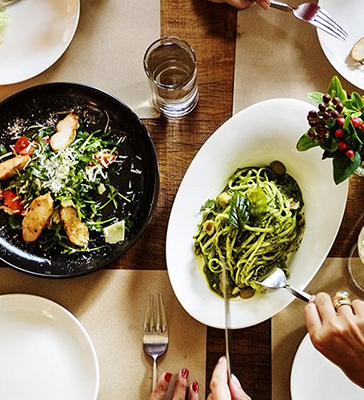
Embracing Restaurant Trends in 2023
The restaurant industry has always been a dynamic and constantly changing field, shaped by changing customer preferences, economic factors, and societal trends.
In recent years, we’ve witnessed a significant shift in the way restaurants approach their menus and promotions. The focus has shifted towards streamlining menus by reducing “nice to have” items like wine and desserts while emphasizing promotions to attract and retain customers. Let’s explore these restaurant trends and their implications for both diners and restaurateurs.
Streamlining Menus
Streamlining menus in the restaurant industry refers to the practice of simplifying and reducing the number of menu items offered to customers. Instead of having extensive menus with a wide variety of dishes and options, restaurants focus on offering a more concise and curated selection of dishes. This approach has gained popularity for several reasons:
- Efficiency: A concise menu allows kitchens to operate more efficiently, reducing preparation time and minimizing waste.
- Cost Savings: A smaller menu reduces the need for a wide variety of ingredients, cutting down on inventory costs and food waste.
- Quality Control: Focusing on a limited selection of dishes enables chefs to perfect their recipes, ensuring consistently high-quality meals.
- Speed of Service: Simplifying menus can result in faster service, a crucial factor in today’s fast-paced world.
- Adaptability: A concise menu is more adaptable to changes in customer preferences and dietary trends. It’s easier for restaurants to introduce new dishes or modify existing ones to align with evolving tastes.
- Staff Efficiency: A simpler menu can lead to greater kitchen efficiency, with staff specializing in specific dishes and streamlining their workflow. This can reduce labor costs and enhance overall productivity.
- Marketing Focus: An optimized menu allows restaurants to focus their marketing efforts on a select few signature dishes, promoting them as their specialties. This can help create a stronger brand identity.
Reducing “Nice to Have” Items
While wine and desserts have long been restaurant staples, some establishments are scaling back on these “nice to have” items in favor of a more focused dining experience. Here’s why this trend is gaining traction:
- Health Consciousness: Many diners are becoming more health-conscious, opting for lighter meals and skipping indulgent desserts and alcoholic beverages.
- Cost-Consciousness: Dining out can be expensive, and diners are increasingly looking for affordable options. By reducing pricey items like wine and desserts, restaurants can offer more competitive prices.
- Cost savings: Nowadays, customers tend to choose main dishes, making it expensive for restaurants to purchase ingredients that may end up unsold, as consumers try to save money while dining out.
- Flexibility: A more streamlined menu allows restaurants to adapt to changing trends and dietary preferences more easily.
Emphasizing Promotions
In today’s competitive restaurant landscape, promotions have become a valuable tool for attracting and retaining customers. Here are some key promotional strategies restaurants are employing:
- Happy Hours: Offering discounted drinks and appetizers during specific hours can draw in after-work crowds and boost revenue.
- Weekly Specials: Featuring rotating weekly specials can create excitement and encourage repeat visits.
- Loyalty Programs: Offering discounts, freebies, or exclusive offers can foster customer loyalty
- Online Ordering Discounts: Restaurants are increasingly promoting their online ordering and delivery services through exclusive discounts and offers available only to customers who order through their websites or apps.
- Limited-Time Offerings: Creating a sense of urgency and exclusivity, limited-time menu items or promotions, such as seasonal specials or collaborations with local businesses, can drive customer engagement.
- Discount Bundles: Offering bundled deals, where customers can get a combination of items at a discounted price, it is a strategy to increase the average check amount and provide perceived value.
- Family or Group Deals: Family-friendly and group-oriented promotions, like “Kids Eat Free” nights or group discounts for larger parties, cater to a broader customer base.
- Brunch and Breakfast Promotions: Weekend brunch promotions and breakfast deals are becoming more popular as consumers seek diverse dining experiences.
- Social Media Contests and Giveaways: Engaging customers on social media through contests and giveaways can boost online presence and encourage customer participation.
- Health and Wellness Promotions: As health-consciousness grows, restaurants may offer promotions centered around healthy menu items, such as “Salad Days” or discounts on low-calorie options.
- Sustainability Initiatives: Some restaurants promote sustainability by offering discounts to customers who bring their reusable containers or by highlighting eco-friendly menu choices.
The restaurant industry is ever-evolving, and staying current with trends is essential for success. The shift towards streamlining menus by reducing “nice to have” items like wine and desserts while emphasizing promotions reflects the changing preferences and economic realities of diners and restaurateurs alike. By embracing these trends, restaurants can enhance efficiency, reduce costs, and appeal to a broader customer base.
LAST NEWS


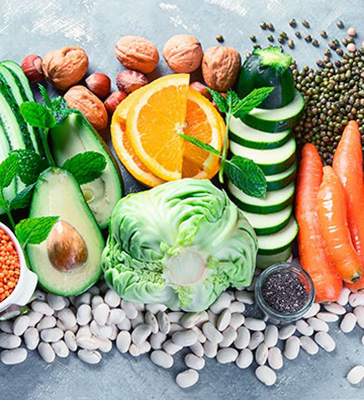
Exploring the World of plant-based meat, eggs, and dairy-free milk alternatives
The demand for plant-based and alternative protein sources has surged, leading to a remarkable array of options that cater to diverse dietary preferences and lifestyles.
Let’s explore the exciting world of meat, eggs, and milk alternatives, showcasing the delectable and sustainable options available today.
Plant-Based Meat Alternatives
Plant-based meat alternatives have undergone a tremendous transformation in recent years. Innovations in food science and technology have given rise to delicious, meat-like products that appeal to both vegetarians and meat-eaters alike. Alternative meat products have successfully recreated the taste, texture, and even “bleeding” effect of traditional meat using plant-derived ingredients.
These alternatives are often made from protein-rich sources like soy, pea protein, seitan, and jackfruit, and they contain a fraction of the saturated fats found in animal-based meats. Not only are they environmentally friendly due to lower greenhouse gas emissions and reduced land and water use, but they also offer health benefits by promoting a plant-focused diet.
Egg Substitutes
For those who enjoy baking or need an egg substitute in their savory dishes, various egg alternatives have come to the rescue. Traditional eggs can be replaced with easily accessible plant-based options, such as flaxseed meal, applesauce, mashed bananas, silken tofu, and commercial egg replacers. These substitutes work remarkably well in most recipes and still provide the necessary binding or leavening properties. Plant-based egg alternatives are not only cholesterol-free but also significantly reduce the environmental impact.
Dairy-Free Milk Alternatives
Dairy-free milk alternatives have gained immense popularity in recent years, providing consumers with a wide range of choices to suit their taste preferences and nutritional needs. Common milk alternatives include almond milk, soy milk, oat milk, coconut milk, rice milk, and hemp milk. Each variety offers its unique flavor profile, consistency, and nutrient composition.
These alternatives are often fortified with essential vitamins and minerals like calcium and vitamin D, making them suitable replacements for traditional cow’s milk. They are also suitable for people with lactose intolerance or those who follow a vegan lifestyle, reducing their ecological footprint significantly.
Nutritional Benefits and Sustainability
Meat, eggs, and milk alternatives are not only sustainable but also offer numerous health benefits. Plant-based protein sources are typically lower in saturated fats, cholesterol, and calories, while being rich in fiber, vitamins, and minerals. Incorporating these alternatives into one’s diet can help reduce the risk of heart disease, diabetes, and other chronic health conditions.
From an environmental standpoint, embracing meat, eggs, and milk alternatives can significantly reduce greenhouse gas emissions, deforestation, water consumption, and animal suffering associated with conventional animal agriculture.
The world of meat, eggs, and milk alternatives is a vibrant and rapidly expanding realm of culinary possibilities. With ongoing advancements in food technology and an increasing focus on sustainability and health, these alternatives have become more accessible, delicious, and nutritious than ever before. Whether you are a committed vegan, a flexitarian, or simply someone seeking to make more environmentally conscious choices, these alternatives offer an enticing and wholesome way to enjoy your favorite dishes without compromising on taste or ethics. So why not embark on this sustainable and flavorful journey today? Your taste buds, your health, and the planet will undoubtedly thank you.
LAST NEWS


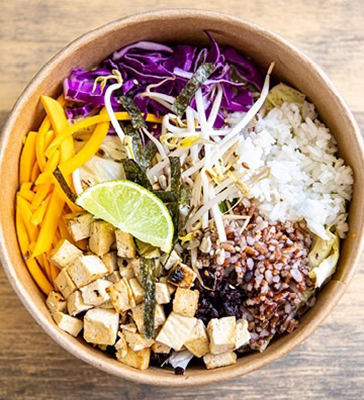
Eating healthy: what does it mean?
Adopting a healthy diet is important to be fit and take care of your health, throughout your life. But what does that really mean? What does healthy eating mean? Our food for thought.
Bet on plants
First thing to start eating healthy: put more vegetables on your plates. Nutrient-rich fruits and vegetables, cereals (bread, rice, pasta), legumes (lentils, chickpeas, split peas…): do not hesitate to put them on the menu as often as possible. Meat and fish may have a smaller place on the plate. As for fats, in reasonable quantities, and dairy products (2 to 3 per day), they are essential to a balanced diet and can therefore be consumed daily.
Water, water, water
To hydrate your body, drinking at least a liter and a half of water a day is important. Water is indeed essential to life: it represents the main constituent of the body. It must therefore be the drink preferred by all.
Quality food
A healthy diet is also a diet composed of quality products. No battery chickens or eggs from hens raised in intensive farms. Yes, to poultry and eggs from the farm, if possible local and organic. Also avoid additives and prefer raw products as much as possible. Better a short menu composed of fresh and raw products than an extended menu, prepared with industrial products. In short, yes to simplicity, natural, homemade!
Balanced meals
Eating healthy starts with jumping out of bed. Breakfast is indeed an essential meal for the body: it must provide nutrients and satiate until lunch. Ideally, it should consist of dairy, cereals, fruit and a drink to fill up with vitamins, energy and hydration. Lunch and dinner should be composed of vegetables, raw vegetables and fruits, but also starchy foods, dairy products and proteins (meat, fish, egg) to provide a satiety effect. A snack can be taken occasionally, as long as it is reasonable.
No prohibitions
Eating healthy finally includes knowing how to treat yourself from time to time. It is therefore important not to ban any food and not to ignore a food category, at the risk of having deficiencies and frustrations. A good chocolate cake, prepared with quality ingredients, has its place on the menu of a healthy cuisine restaurant.
LAST NEWS


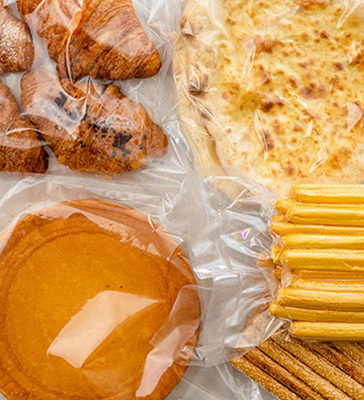
How to keep your fresh food longer?
Keeping your food fresh is an art! So what are the tricks to expand their life span? Here are our tips!
Preserving in the fridge
A good preservation of fresh food begins as soon as they are put in the fridge. The majority of fruits and vegetables should be placed in the refrigerator, stay cool and well protected from light, in the crisper part of the refrigerator, which offers the best temperature. To ensure freshness and avoid cross-contamination of ingredients use professional Gastronorm (GN) containers made of transparent polycarbonate or vacuum packed bags. But be aware that some foods need to be kept the open air and not in the fridge. This is the case, for example, for apples, apricots, potatoes, onions, or bananas. It is best to leave them at room temperature.
Vacuum packaging.
Vacuum packaging has many advantages. It protects fresh food from air and light which prevents it from spoiling, without using any preservatives. The air is removed by vacuuming, this significantly extends the shelf life of food and avoids food waste. Meat, fish, fruits, cooked vegetables, ready meals. Dito Sama offers a complete range of vacuum machines designed to help you preserve your food perfectly and longer. Finally, it should be noted that it is quite possible to freeze a vacuum-packed food.
Canned food
Another clever method for preservation is done thought canning. This makes it possible, for example, to buy tomatoes during the summer to enjoy them throughout the winter. Ready meals or vegetables in brine can also be canned. Dehydration is also a good option: apple chips, dehydrated mango strips or dried meat are yours!
Blast freezing
Last method to preserve your fruits, vegetables and other small dishes fresh, is by freezing, which is bet for long-term conservation. To preserve the nutritional value of food, the ideal is to cook and then blast freeze food. The golden rule of preservation is to keep your food at a temperature of -18 ° C. To conserve your products, use vacuum packaging or GN plastic containers that are made exactly for this purpose. Also remember to label each dish by specifying the nature, weight and freezing date to remember accurately what you have prepared!
LAST NEWS


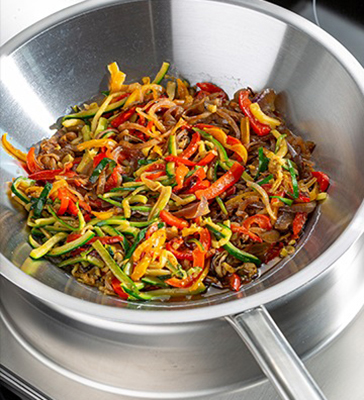
The healthiest cooking methods
Discover the healthiest cooking methods
Adopting healthiest cooking methods is important for health. To choose cooking methods for good health, but also to preserve the planet, follow the guide!
Fast and gentle cooking
Not all cooking methods are created equal. So to preserve your health, what are the most appropriate? First thing to know about cooking: a health cooking must respect the nature of the food and cook in the gentlest way possible. For example, avoid cooking too long in the oven, which denatures the food. For a qick cook, you can choose wok cooking, which allows you to sear meat and fish in a few moments and brown vegetables and fruits in a jiffy. Another option: opt for raw, rich in vitamins.
The Art of Steaming
One of the healthiest cooking methods is steaming. It allows you to cook gently while preserving the benefits of food. To give flavor to your small steamed dishes, use aromatic herbs or spices. Mint, bay leaf, coriander, curry, paprika, turmeric… Vegetables or fruits are of course perfect for steaming. This is also the case of fish or meat, which will keep all their softness.
Choose the right materials
When selecting cooking materials, it is important to opt for healthy options. Consider using glass, which is ideal for cake molds, as well as stainless steel. Terracotta, unglazed cast iron or porcelain are also intriguing choices as they are healthy, sustainable and natural. Scratches on your nonstick pan? There are risks of loss of toxic materials so head to the trash! Finally, avoid aluminum foil when cooking, which can be toxic to the body, especially when it comes into contact with acidic foods.
Avoid plastic!
Cake molds are sometimes made of plastic and other low-end silicones, whose composition and provenance are not always identified. They can contain endocrine disruptors, so it’s important to avoid them, especially when cooking.
LAST NEWS

